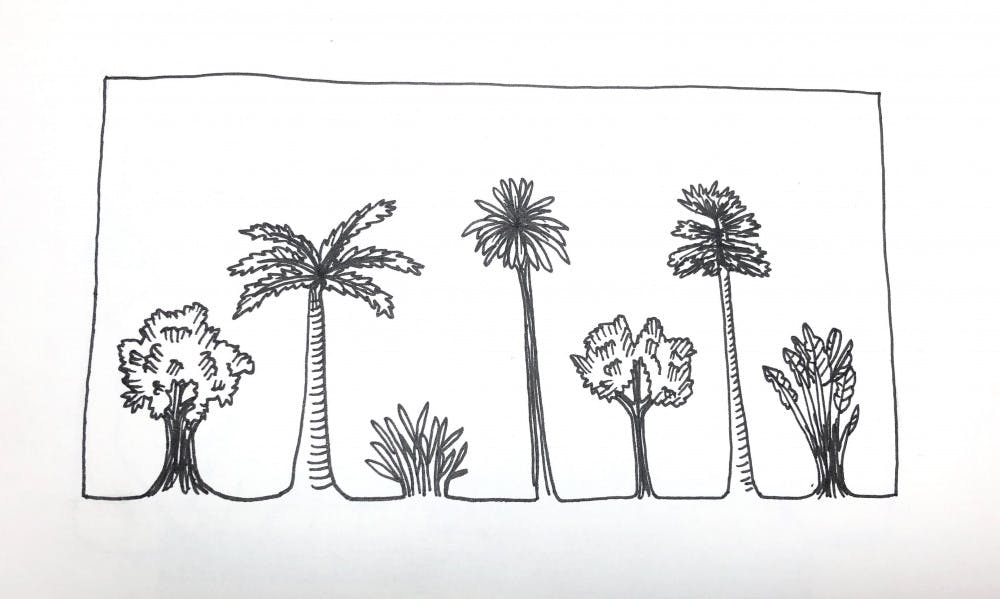In a study of a species of brightly-flowering trees, a University professor used satellite imagery to observe how the trees’ population density affects their spread. The study’s design demonstrates that satellite imagery is a viable method of studying tree populations and opens the door for global ecological studies in the future.
As the population of the tree Handroanthus guayacan increased in size, it became more severely hunted by its predators. In this sense, there is “a penalty for getting too common,” said James Kellner, assistant professor of environmental studies and co-lead author of the study.
The study found evidence to support the idea that greater population size is tied to lower population density, as proposed by the Janzen-Connell hypothesis, a foundational theory of ecology relating to the biodiversity of tropical forests. Scientists have studied how population density affects trees but never had empirical data to corroborate it, Kellner said.
Using new remote-sensing technology, the study set out to quantify the observations of the Janzen-Connell hypothesis, Kellner said. Several previous studies have examined how seeds or saplings are preyed upon in areas with a greater concentration of trees, but this is the first project to observe the actual changes in the population of a tree in a tropical forest, Kellner said.
Using highly accurate satellite imagery, researchers looked at the canopy of trees on Barro Colorado Island, Panama to see when each individual H. guayacan tree flowered. They also measured the population and location of these trees over a period of 10 years with satellite photos and by manually counting each tree, Kellner said.
Along the way, Kellner had to find a statistical and mathematical way to account for any possible data inaccuracies, such as random anomalies or overhead clouds. “If you have a tree that happens not to flower for a given year, but it’s alive, you don’t want to say it died. So you have to have a way of estimating how many trees were not detected in a given census interval,” said Stephen Hubbell, former professor at University of California, Los Angeles and co-lead author of the paper. Using various statistical methods, Kellner was able to compensate for these types of challenges and improve the accuracy of his data set, Hubbell added.
One of the principal implications of this paper is the precedent it sets for future research into global ecology using satellite imaging, Hubbell said. “I think the most important finding is that, by using tools to identify canopy trees of individual species, and by taking long-term data, we can actually measure the population dynamics of rare tropical tree species,” he said. This type of science will play a key role in providing data for conservation efforts, climate change and habitat loss, Hubbell added.
Working with Planet Labs, a California-based company that designs and sends shoebox-sized satellites called “cube sats” into orbit, Kellner and Hubbell anticipate being able to take a snapshot of the entire Earth every single day. Planet Labs’ “imaging constellation can uniquely observe changes in large tropical trees every day the sky is clear, enabling ecologists like Jim to develop truly novel science,” wrote Joseph Mascaro, director of academic programs at Planet Labs, in an email to The Herald. The global impact this kind of data and research can have across many disciplines “is fundamentally game-changing,” Kellner said.





